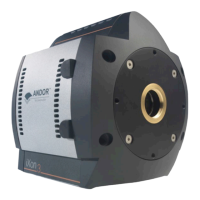Page 11
1.3 - SAFETY PRECAUTIONS & MAINTENANCE
1.3.1 - Care of the camera
WARNINGS:
1. The camera is a precision scientic instrument containing fragile components. Always handle with the care
necessary for such instruments.
2. There are no user serviceable parts inside the camera. If the head is opened the warranty will be void.
3. The camera should be mounted so that the mains supply can be easily disconnected. In case of emergency,
the disconnecting device is the mains lead. This will either be the mains lead connected to the product, or in
the case of a cabinet-based system the mains lead to the cabinet.
4. To prevent accidental internal damage to the camera, objects small enough to enter the slots on the sides of
camera should be placed well away from these slots.
5. Ensure that a minimum clearance of approximately 100 mm (4”) is maintained in front of all ventilation slots
and the fan inlet. Cooling performance cannot be guaranteed unless these criteria are observed.
6. Only use a dry, clean, lint free cloth to clean all painted surfaces. If necessary, use a water diluted detergent
to lightly dampen the cloth - do not use Isopropyl alcohol, solvents or aerosols.
7. To clean the window, remove loose particulate matter with an air blower. If the component is still not clean, it
may be drag wiped using folded lint free, clean, soft white tissue dampened with pure methanol.
8. If the equipment is used in a manner not stated by Andor, the protection provided by the equipment may be
impaired.
1.3.2 - Environmental conditions
• Indooruseonly
• Altitudesupto2000m
• Operatingtemperature0°Cto40°C
• Maximumrelativehumidity<70%(non-condensing)
• Othervoltageuctuationsasstated
• Overvoltagecategory1:Thisisdesignedtowithstandthenormaltransientvoltagesexpectedatamainssocket
• Pollutiondegree2:Onlynon-conductivepollutionoccurs.Occasionally,temporaryconductivitycausedby
condensation is to be expected
• Electromagneticcompatibility:ThisisaClassAproduct.Inadomesticenvironmentthisproductmaycause
electromagnetic interference, in which case the user may be required to take adequate measures
Introduction

